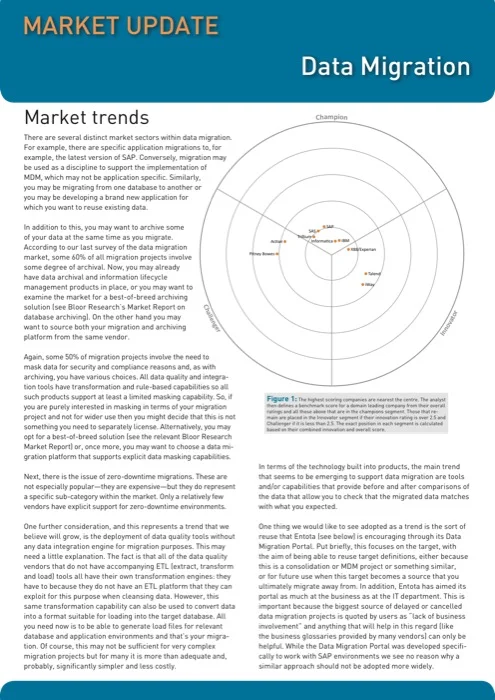Data Migration Market Update – 2013
2024 Bloor, All Rights Reserved.
Classification
There are several distinct market sectors within data migration. For example, there are specific application migrations to, for example, the latest version of SAP. Conversely, migration may be used as a discipline to support the implementation of MDM, which may not be application specific. Similarly, you may be migrating from one database to another or you may be developing a brand new application for which you want to reuse existing data.
In addition to this, you may want to archive some of your data at the same time as you migrate. According to our last survey of the data migration market, some 60% of all migration projects involve some degree of archival. Now, you may already have data archival and information lifecycle management products in place, or you may want to examine the market for a best-of-breed archiving solution (see Bloor Research’s Market Report on database archiving). On the other hand you may want to source both your migration and archiving platform from the same vendor.
Connect with Us
Ready to Get Started
Learn how Bloor Research can support your organization’s journey toward a smarter, more secure future."
Connect with us Join Our Community


